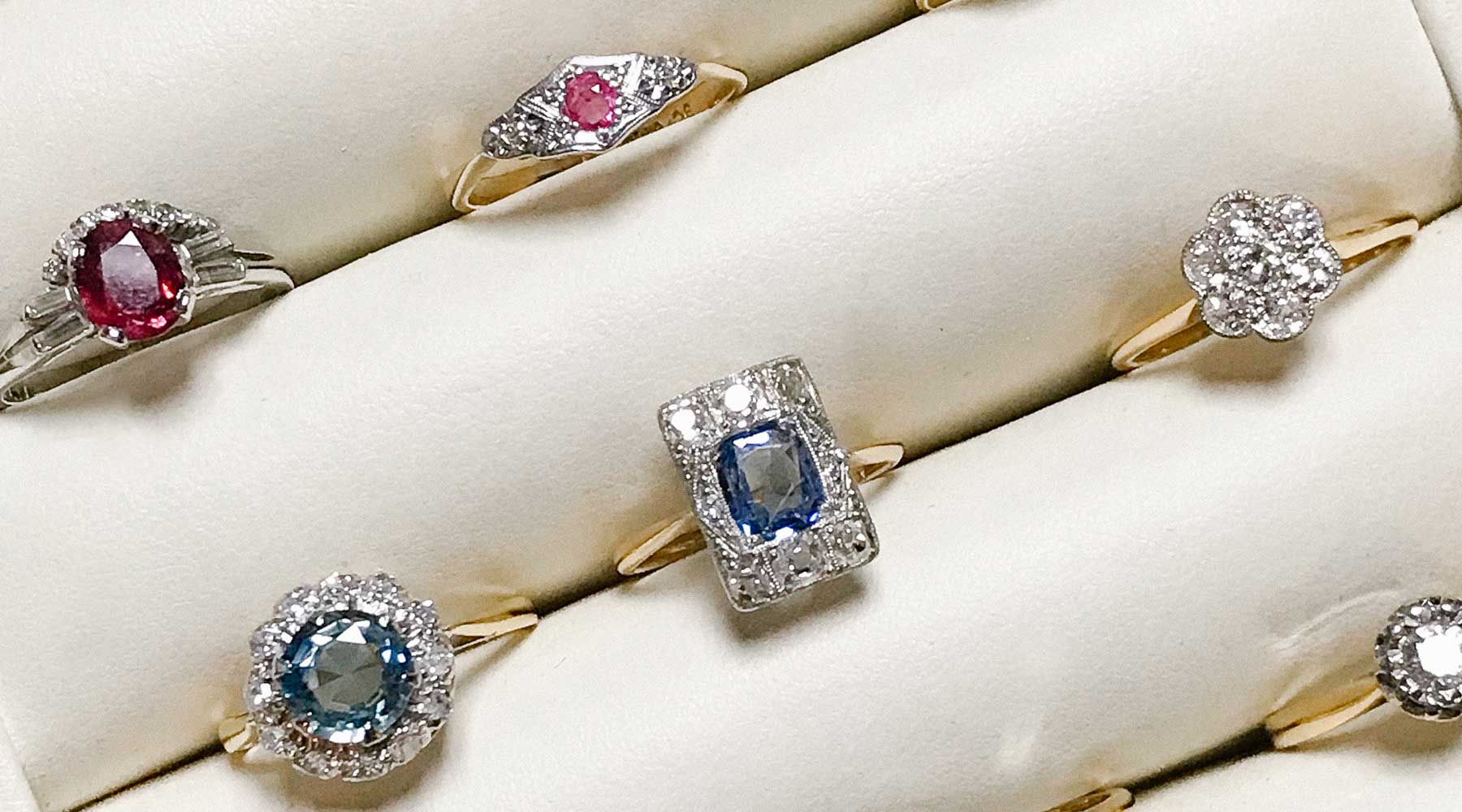
Why Old Cut Diamonds are essential for That Vintage Look
So evocative of the past, old cut diamonds are one of our favourite stones at The Vintage Ring Company because there is no other gem that immediately conjures up the feeling that you have stepped back in time.
The term “old cut diamond” crops up a lot when you are browsing antique jewellery, particularly rings. But what does it mean? One of the most popular antique diamond cuts, old cut diamonds were a precursor to today’s round brilliant diamonds – those of the legendary sparkle and the most popular diamond cut for modern engagement rings today.
From a distance, they look fairly similar. Each is round and they both scintillate, though to differing degrees. The first major distinction between the two is that old cut diamonds were shaped by hand and, thanks to the advances of the industrial age, round brilliants are cut by high-tech machinery.
The beauty of hand craftsmanship
Before equipment was invented in the late 1800s designed to shape diamonds much more efficiently than manpower alone, diamonds were cut by craftsmen who were responsible for every aspect of their look and feel, from their overall silhouette to the positioning of the facets (the flat surfaces of a diamond that refract light within the stone). The romance of this image – an artisan sat at his bench more than a century ago, painstakingly polishing your diamond – is one of the most endearing features of an old cut diamond.

Diamond cutter at work in his workshop. Carel Lodewijk Dake, 1867 - 1887
Old cut diamonds: antique stones with soul
Whilst round brilliant diamonds are cut specifically to create maximum sparkle, old cut diamonds scintillate much more deeply and subtly. Some people are turned off by the full-on bling of round brilliant diamonds, and old cuts offer a soft and soulful alternative.
When old cut diamonds were cut, they were designed to look their best beneath candlelight, which is how they would have been appreciated at the time. This gives them a charismatic beauty that you just don’t get with a round brilliant.
There is no better gemstone to choose for an engagement ring if you are drawn to the vintage look. An old cut diamond glows from within and, because they have been cut by hand, each has its own charm and personality.
The physical attributes of old cut diamonds
When it comes to their number of facets, there is very little that distinguishes old cut diamonds from round brilliants. Old cuts have 58, while most round brilliants have 57, but it is how those facets have been positioned that creates the dramatically different look of each. While the goal with a round brilliant diamond is to maximise its brilliance, old cut diamonds are faceted to optimise their natural colour.
If you want to find out more about the physical attributes of old cut diamonds, Farringdons gives a detailed insight into the precise differences here.
 Large diamond on sale, Amsterdam, 26th August 1778. Unknown
Large diamond on sale, Amsterdam, 26th August 1778. Unknown
The nuanced beauty of old cut diamonds
The hand-crafted nature of old cut diamonds also results in a noticeably different look and feel. Look closely and you can tell, by its shape – which might not be perfectly symmetrical – and by the placing of its facets, that the diamond has been cut by hand. This is the aspect that I love the most. When you look into an old cut diamond, you are transported to a different era entirely.

PATSY DIAMOND 1930S ENGAGEMENT RING featuring an Old cut diamond
Other names for the old cut diamond
At The Vintage Ring Company, we refer to them as old cut diamonds, but you might find others describing them differently. Another moniker that I encounter frequently is old European cut diamonds, and the two are interchangeable.
Old mine cut diamond is another term used to refer to old cut diamonds. This name plays on the allure of their past because old cut diamonds originate from historic mines that have long since been depleted.
Whatever you choose to call your old cut diamond, you won’t fail to fall in love with it. Light a candle and watch the light dance within whilst imagining the person who originally wore the very same diamond in a different place and a different time, long, long ago.

 Large diamond on sale, Amsterdam, 26th August 1778. Unknown
Large diamond on sale, Amsterdam, 26th August 1778. Unknown
